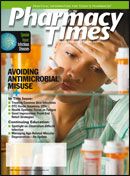Publication
Article
Pharmacy Times
Promoting Drugs for Unapproved Uses
Author(s):
The use of drugs for unapproved indications is frequently discussed and sometimes causes great angst in hospitals and health systems.
Mr. McAllister is a health-systems consultant based in Chapel Hill, North Carolina.

In January 2009, the FDA issuedGood Reprint Practices for theDistribution of Medical JournalArticles and Medical or ScientificReference Publications on UnapprovedNew Uses of Approved Drugsand Approved or Cleared MedicalDevices (FDA.2008.D.0053). The 1997statute and the implementing regulationsfor the industry promoting unapproveduses ceased to be effectivein September 2006, so new guidelineswere issued. After first review,I thought the new recommendationswere significantly less stringent andhad opened doors for abuse by theindustry. A more careful review, however,revealed "nonbinding recommendations"that could maintain thestatus quo if we hold the manufacturersaccountable for compliance.
The use of drugs for unapprovedindications has been an issue that hasfrequently been discussed and sometimescaused great angst in hospitalsand health systems. The predominantconundrum has been genuine interestin achieving optimal drug therapyoutcomes while ensuring safety andminimizing cost.
The issue is complicated, if not created,by the drug approval processitself. Pharmaceutical manufacturersusually race to drug approval to maximizepatent protection as well as generaterevenue. To achieve FDA approvalas rapidly as possible, the companyusually seeks approved indications foruse with data that are as robust andleast controversial as possible. Thus,although there may be indications thatlook promising, study data to supportthis use may be incomplete or questionableat some level. Manufacturers thenmust decide whether to seek approvalfor limited indications to bring theproduct to market as soon as possibleor delay overall approval to expand thenumber of approved indications.
Following the initial approval ofthe new drug, the manufacturer mustthen decide whether the investmentrequired in conducting additional trialsto achieve approval for new indicationswill result in an acceptable financialreturn. As you might imagine, a myriadof factors, including the availability ofcompetitive products and duration ofpatent protection, and the availabilityof resources that could be availablefor other drugs under development areconsidered, but the dominant factorwill always be net profit.
Prior to approval, clinical trials generatea great deal of interest amongresearch physicians who give presentationsand publish papers, the results ofwhich generate interest in using a drug,including uses outside those indicationsthat are eventually approved bythe FDA. Clinical trials using the drugoften continue following FDA approvaland sometimes result in reliable datasupporting other indications. Someother "trial" results also may be publishedbut without the scientific rigorcommonly used in studies submitted inthe approval process.
Individual prescribers are not boundby the FDA-approved indications andthus prescribe new drugs for unapprovedindications based on their professionaljudgment. Pharmacy andTherapeutic Committees have struggledto ensure that such uses are substantiatedby as much reliable data aspossible and to minimize the influenceof manufacturers' representatives andany promotional material that werenot substantiated by well-controlledclinical trials.
The 1997 FDA Modernization Actbegan the establishment of conditionsunder which manufacturers coulddistribute materials discussing unapprovedindications. In 2000, following anAppeals Court decision, the FDA publisheda notice clarifying a "safe harbor"for manufacturers regarding distributingmaterials about a drug's unapproveduses. As a result, companies halted theirsales force from discussing unapproveduses at all and frequently created acadre of providers—often pharmacistsand dubbed "medical science liaisons"whose compensation was not tied tosales and who were allowed to discussunapproved uses with providers. Frommy perspective, this strategy had positiveresults in terms of limiting inappropriateinfluence of manufacturers onprescribers who might consider inappropriateuses.
Limiting inappropriate influence ofmanufacturers over unapproved useswill require vigilance on our part. Wemust become familiar with the newrecommendations and report excessesto the FDA. I think we are up to it.What do you think?







